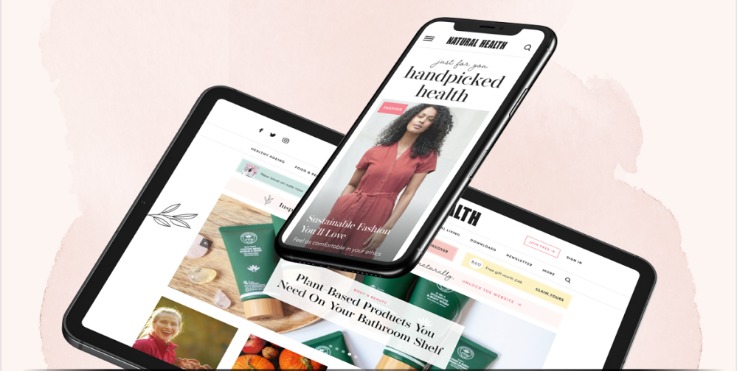We chat to wellbeing guru Liz Earle, who has recently launched her new book The Good Gut Guide
I’ve been writing about how food can make us feel good and look better for the past 30 years as our diet really is the most effective thing we can control to influence our wellbeing. My pioneering book Vital Oils, which was published back in 1991, was one of the first to highlight how good fats and oils can have an impact on so many health and beauty concerns, from arthritis and heart disease to eczema and psoriasis. Back then, it was hard to find good quality, cold-pressed oils for cooking, so it’s been a joy to see this whole area of holistic healthcare expand so widely. I love the fact that sustainability and provenance has become such a big part of what we buy to eat too.
I’m constantly researching new areas of wellbeing and I recently became increasingly aware that much of the modern nutritional research and science is focusing on the gut and our magnificent microbes. I looked at so many scientific papers, which give us the scientific, jargon and medical books, which bring us the health studies, but I struggled to find a book that brought all this together and showed how we can put this knowledge into everyday practise. From focusing on how to rid the body of damaging microbes and parasites to easing eczema, improving mood and depression, assisting weight loss and sorting out any digestive issues, there is so much to be gained from better gut health, and this is what inspired my new book The Good Gut Guide .
I loved working out a practical way we could all easily start to see a real benefit, so I take my reader on a journey that’s easy to navigate with a simple, easy to follow guide. I start with an overview of what your personal issues and needs might be, and follow this up with ideas on ways to repopulate your gut with beneficial intestinal flora. Then there are lots of recipes for foods that will encourage and maintain the good bugs. I loved the challenge of creating family-friendly foods that even my smallest children love to eat!
If you’d like to focus on your gut health, look for live, cultured and fermented foods and add a small amount into your diet every day. You’ll find these foods in every culture, from Korean kimchi to German sauerkraut and French crème fraiche. I give recipes for all these and much more in my book – even how to make your own sourdough bread, which is easier to digest as it has been fermented.
My advice is to start by clearing out your cupboards and pass on all the things that will hinder progress – white flours, refined sugars, processed foods. Write yourself a good gut shopping list so you have plenty of micro-flora friendly foods at hand. Take small steps and acquire the taste for plain live yoghurt, kefir and kimchi. Adding these new foods into your everyday normal diet will give your microbiome a boost and is so easy to do.
Fill your fridge with healthy options that are always at hand to grab and go when you’re in a rush. When I know I’ve an early start, I pre-soak some oats in milk the night before, throw in a few almonds and berries and stir in a spoonful of plain, live yoghurt as a quick breakfast. Soaking the oats starts the fermentation process and makes them easier to digest. You can even make this in a jar and take it with you to eat when you’ve time.
3 foods I’ll be eating this month
British raspberries
These are packed with flavour as well as antioxidants
Homemade kefir
This is delicious drizzled over Wimbledon strawberries
New potato salad
Cold carbs are an excellent source of resistant fibre to feed beneficial gut bugs
About liz
Favourite snack
Plain dark chocolate – 80 percent is my favourite
Favourite lunch
A bowlful of brown rice with sunflower seeds, veggies, chopped avocado and maybe some fresh tuna
Favourite supper
A juicy Hereford grass-fed steak (packed with omega3s) with asparagus and Jerusalem artichokes (both terrific prebiotic veggies) and a large mixed green salad




